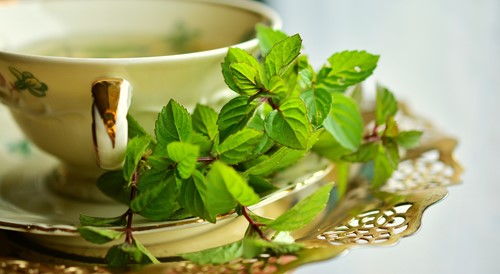
Photo by congerdesign via Pixabay
Do you love the idea of having fresh herbs available all year round but don't live in an area where it's possible to grow them outdoors in all seasons? You don't have to give up cooking with fresh herbs just because the weather outside is frightful — and you also don't have to install a complicated growing setup with special lights. If you've got a sunny windowsill, you can have fresh herbs even in the dead of winter. Following are just five of the many culinary herbs that you can have at your fingertips all year round with just a few indoor pots, some indoor potting soil, a sunny spot, and a little water.
Mint is a fragrant, prolific grower that thrives indoors when situated where it gets plenty of bright natural light. Use it in teas, cocktails, and as an aromatic garnish.
A pinch of thyme makes almost any meal better, from egg dishes to soups and stews to roasts and grilled seafood. Grow it on a windowsill where it gets plenty of sun, and you'll be rewarded with an extra layer of deliciousness in nearly everything you place on the dinner table.
Parsley is another easy-to-grow herb that fits just right on a bright kitchen windowsill. Use it in soups, stews, egg dishes, and, of course, its traditional use as a garnish to dress up plates with an added bit of greenery.
As a member of the mint family, oregano is as tough as it is aromatic. Always have fresh oregano on hand for Mediterranean-based cuisine will make all the difference between fair and fabulous.
Adding sage bumps up the flavor profile of any savory dish, but it goes especially well with roasted meats such as pork beef, and poultry. It's also a classic herb to use in stuffing when seasonal feasting is on the menu.
Culinary herbs are meant to be used, so don't be afraid of using yours every chance you get. Use a sharp pair of scissors to remove the part you want to use just below the node on the stem — this encourages new growth and helps ensure that you've got plenty of fresh culinary herbs in future weeks and months. For low-growing herbs such as thyme, you can just pinch off however much you need.
Always keep in mind that even though the flowers of many herbs have a diminutive, whimsical aesthetic, resist the urge to allow your windowsill sill herbs to flower unless you want to collect the seeds. Leaves tend to taste bitter after herb plants flower, and except for woody herbs such as rosemary and lavender, most herb plants are biologically programmed to end their lifecycle once they've finished setting seed.
Please feel free to reach out for more information on enjoying your home to the fullest.
